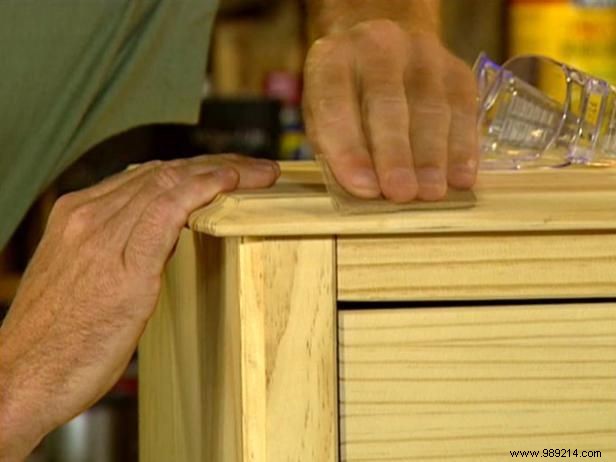
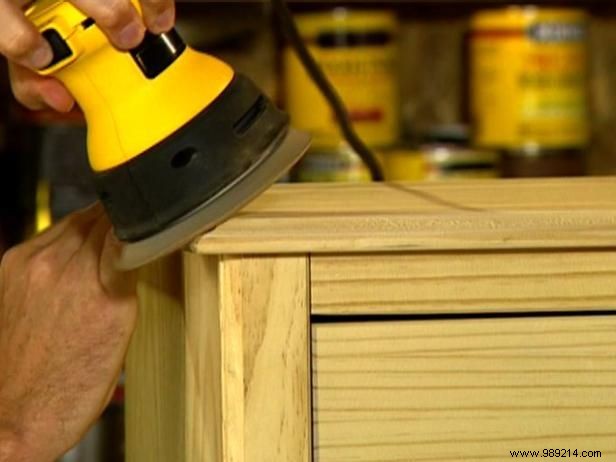
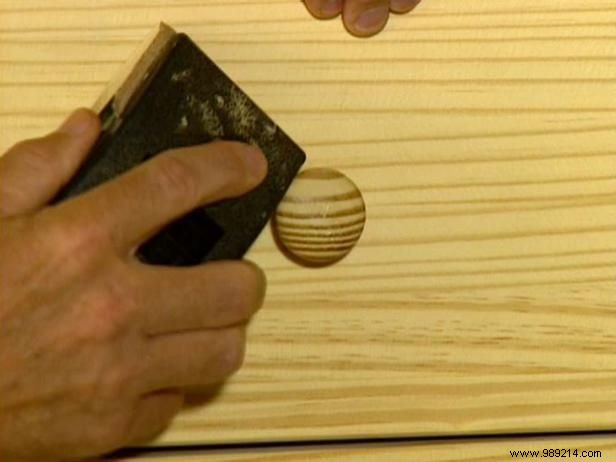
The first step in aging modern furniture is to soften the look of the new wood. Use #120 sandpaper to dull the edges and slightly round off any sharp corners. A palm sander or sanding block will speed up the process. Use sandpaper to mimic signs of wear in areas like the tops of doors and around knobs or other fixtures. After sanding, wipe off dust with a tack cloth.
When distressing a piece of furniture, aim for an appearance that is consistent with damage that might have occurred to an actual antique. Nicks, dents, and insect damage are natural signs of aging that can be reproduced with a few simple household items and tools.
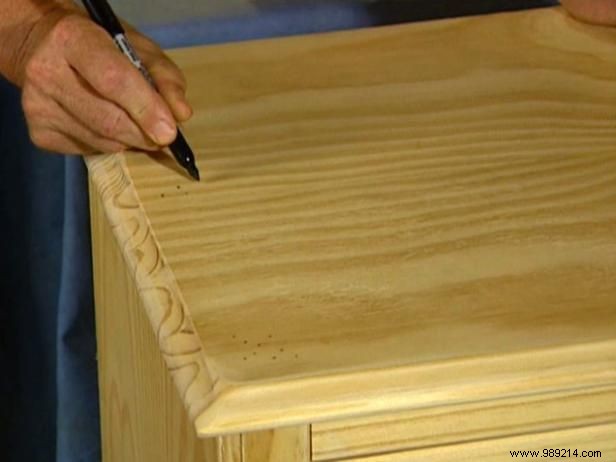
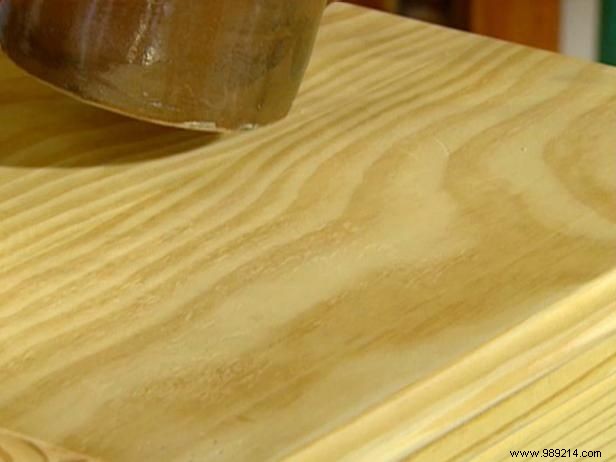
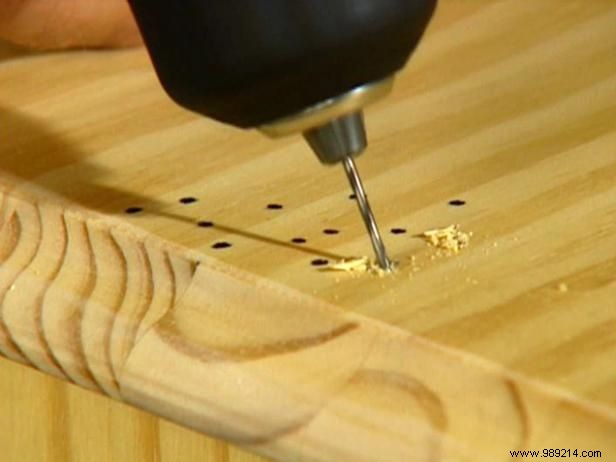
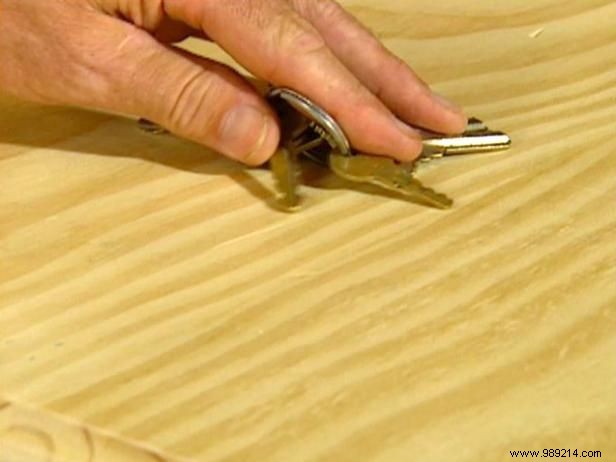
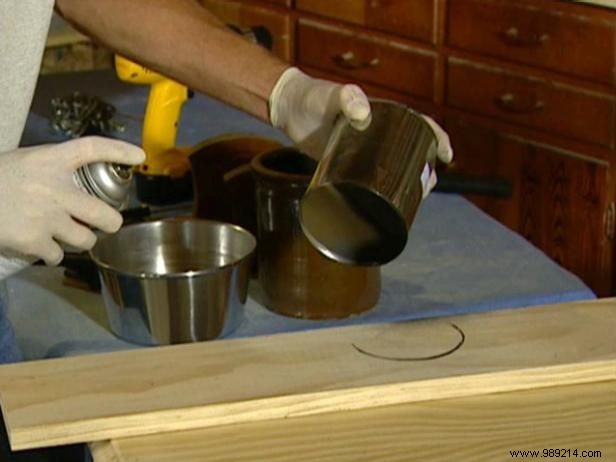
To mimic a group of termite holes, draw a pattern near the edge or end of a board with a marker pen. Then use a drill with a 1/8” drill bit to create holes, slightly varying the angle of the holes for a more natural look. Sand the holes lightly to remove any wood burrs.
Use the rough edge or bottom of a heavy household object, such as a pot or cooking pot, to create dents or scuffs in the surface of the wood. Use more than one object so the marks don't appear too uniform. Accidental scratches can be mimicked by dragging keys or household tools like pliers or a screwdriver across the wood.
A faux water ring can be created by spraying black paint on the bottom of a can and then using part of the can's rim to make an imprint on the wood. It is best to practice this technique on a piece of wood before using it on furniture. Other techniques to simulate age marks include using a toothbrush dipped in ink to create flyspecks, spilling ink to create an ink stain, and leaving a lit cigarette on a table to create a burn mark.
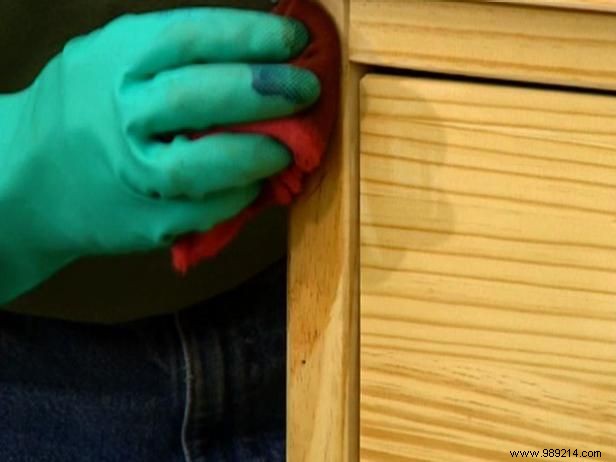
Scratches and dents will show up better once a stain has been applied to the wood. To create a golden patina look, the softened look that comes with age and sun exposure, use a light stain such as golden oak or golden walnut.
After wiping off the dust with a tack cloth and removing the stain thoroughly, apply the stain with a sponge or soft cloth. Wait about three minutes, then wipe off any excess stain with a soft cloth. Let the stain dry overnight.
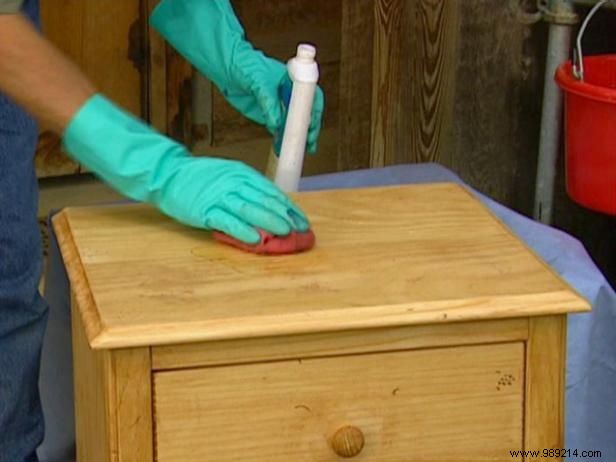
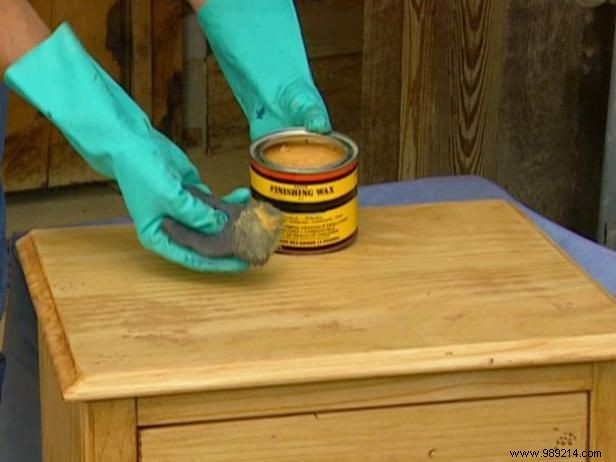
The tung oil finish protects the wood and allows it to retain an antique look, unlike the glossy finish of a varnish. Once the stain has completely dried, rub the tung oil into the wood and let it dry overnight.
For a finishing touch, rub a layer of paste wax into the wood with extra-fine steel wool. After about five minutes, when the wax has started to harden, buff the finish to a satin sheen with a soft cloth. The paste wax in combination with the tung oil will give the wood a look similar to that of a real antique.